Panchmukhi Hanuman Temple
Shri Panchmukhi Hanuman Mandir is a historic Hindu temple in Pakistan. It is located in the Soldier Bazaar in Karachi in the Sindh Province of Pakistan[1] It is a 1,500 year old temple. It is the only temple in the world that has the natural statue of Lord Hanuman. [2] It is declared as a national heritage under the Sindh Cultural Heritage (Preservation) Act 1994. [3]
| Shri Panchmukhi Hanuman Mandir | |
|---|---|
شری پنکھ مکھی ہنومان مندر | |
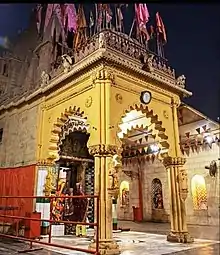 | |
| Religion | |
| Affiliation | Hinduism |
| District | Karachi East District |
| Deity | Panchamukhi Hanuman |
| Festivals | Diwali, Holi, Hanuman Jayanti |
| Location | |
| Location | Soldier Bazaar |
| State | Sindh |
| Country | |
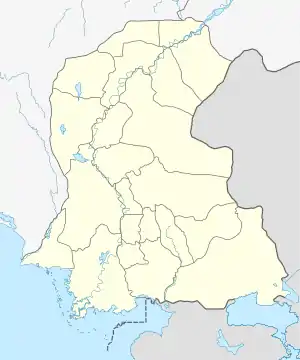 Shown within Sindh 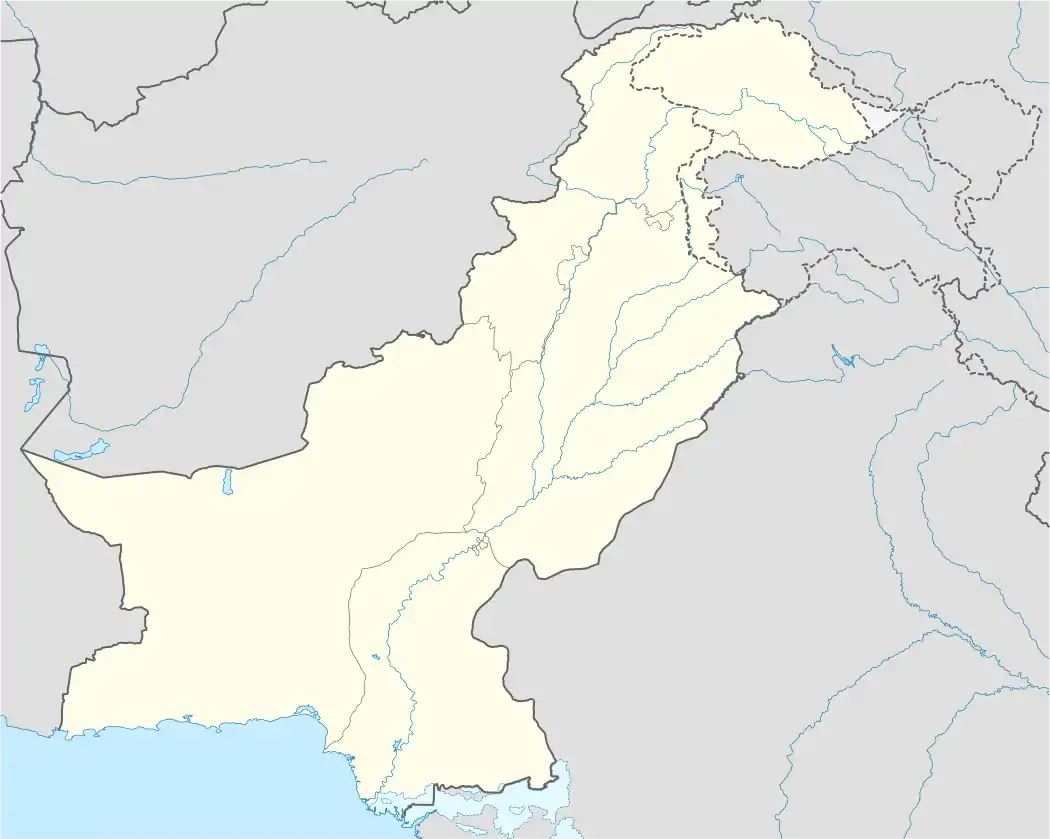 Panchmukhi Hanuman Temple (Pakistan) 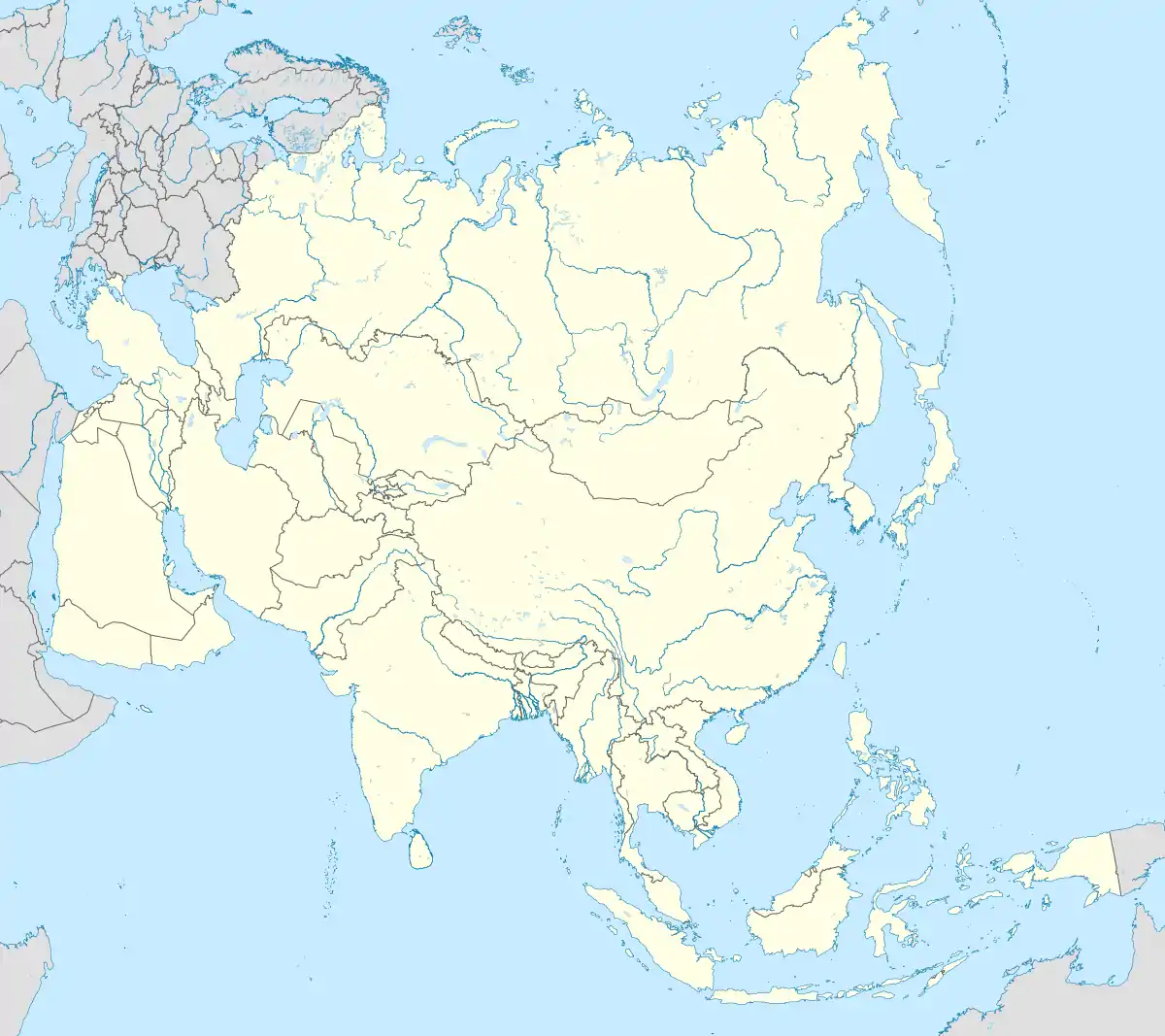 Panchmukhi Hanuman Temple (Asia) | |
| Geographic coordinates | 24°51′38.2″N 67°01′14.1″E |
| Architecture | |
| Type | Hindu Temple |
| Date established | 1500 year old |
| Website | |
| https://m.facebook.com/ShriPunchMukhiHanumanMandir/ | |
Religious Significance
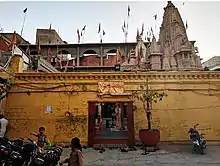
It is believed that during the exile the Lord Ram visited the place where the temple stands. After sometime, a statue of Panchamukhi Hanuman was excavated from that place and a temple was built on the spot. It is believed that circumbulating the Panchamukhi Hanuman idol 11 or 21 times fulfils the wishes of devotees. [4]
Spiritual Significance
There are usually five faces of Sri Panchamukhi Anjaneya as below:
Lord Hanuman: He faces eastwards with steadfast devotion. Worshipping Hanuman helps one to get rid of one’s sins and bestows peace, purity, happiness, and fulfillment.
Lord Narasimha: One of the many avatars of Lord Vishnu, this lion form is south facing. Lord Vishnu took this form to protect his devotee, Prahlada. Worshipping Narasimha removes fear. Fearlessness and victory are the blessings showered on the devotee.
Lord Garuda: Facing west, the Garuda or eagle is part of the Panchmukhi Hanuman manifestation. He offers protection from negative influences, black magic, and evil spirits.
Lord Adivaraha: The boar is another manifestation and is believed to remove the bad effects of planetary movements. Facing the north, Varaha bestows wealth and prosperity.
Lord Hayagriva: The form of the horse faces upward, blessing one with knowledge, progeny and liberation.
In some other interpretations, there is yet another depiction of the Panchmukhi Hanuman which incorporates Lord Ganesh. One face is depicted as half-Hanuman and half-Ganesha. The navagrahas (nine planets) do not have any influence over both these powerful deities. This form is considered to be a rare and powerful manifestation of the Panchmukhi Hanuman.
Origins of Panchamukhi Anjaneya as per Ramayana
During the Ramayana war, a losing Ravana summoned one of his brothers, Ahiravana, the chief of patala (netherworld). Disguising himself as Vibhishana, Ahiravana threw Hanuman off-guard and kidnapped Lord Rama and Lakshman.
When Hanuman went to patala, he learned the only way he could kill Ahiravana. This demon’s soul rested in five candles. The only way to destroy him was to extinguish all five candles at the same time. That is when Hanuman manifested his Panchamukhi roop, each form facing a different direction. Together, they blew out the candles and brought back the still-unconscious Lord Rama and Lakshaman back to Lanka.
Thus, the worshipper of the Panchamukhi Hanuman form is liberated from different fears, negativity, and enemies.
Spiritual significance of the number five
It is said that Lord Hanuman worshipped Lord Ram in five ways:
Naman: Taking the name of the Lord
Smaran: Constant remembrance
Keerthanam: Singing praises & adulations
Yachnam: Sincere, selfless plea for deeper faith
Arpanam: Offering oneself / surrender
This is also the path to worshipping the Panchamukhi Hanuman. Through mantras, stutis, bhajans, Hanuman (the 11th and Rudra avatar of Lord Shiva) has been eulogized.
Famous stotras to Panchamukhi Anjaneya
One of the famous prayers to Panchamukhi Hanuman is the Panchmukhi stotra. It praises each of the five manifestations, eradicating evil and negative forces for the devotee. [5]
History of Panchamukhi Temple in Karachi
The current temple structure was built about 1500 years ago. The temple was spread over 2,609 square feet. Later half of this land very encroached by land grabbers. In 2006, the district court ordered the encroached land be given back to the temple. However many encroachers continued to occupy the temple area even after the order. In 2012, the temple started renovated using the funds collected from Hindu community and from the Muttahida Qaumi Movement[2] In 2019, during the reconstruction works several idols of Hindu gods were excavated from the temple site.[6]
See also
References
- "Diwali celebrations begin in Karachi Prayer services, ceremonies organised at temples across the city". Dawn. 27 October 2019. Retrieved 20 September 2020.
- Rabia Ali (19 February 2012). "Recycling history: And all of Hanuman's men put this temple together again". Express Tribune. Retrieved 20 September 2020.
- Naimat Khan (3 September 2019). "Centuries-old statues discovered at ancient Hindu temple in Karachi". Arab News. Retrieved 20 September 2020.
- Shazia Hasan (10 March 2020). "Holi celebrated in Karachi". Dawn. Retrieved 20 September 2020.
- https://www.templepurohit.com/mantras-slokas-stotras/panchmukhi-hanuman-mantra-stotra/
- Shazia Hasan (10 March 2020). "Holi celebrated in Karachi". Retrieved 20 September 2020.